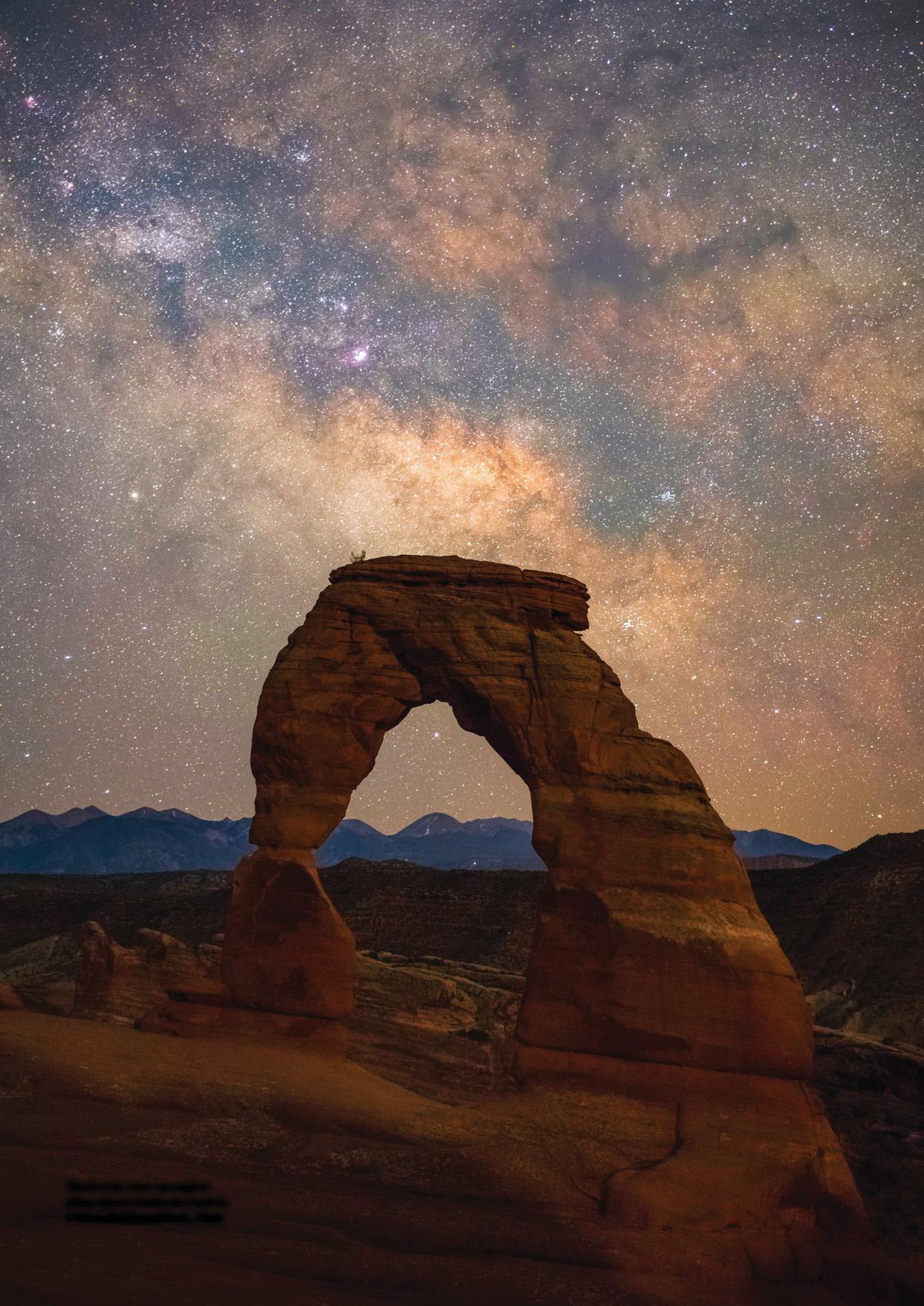
The Sun had set by the time we pulled into a parking lot just outside Moab, Utah. This is where we agreed to meet our host for an evening under the sky and, sure enough, we arrive to find a convoy of four cars waiting for us. At the front was a large station wagon with decals on it that gave away the subject of this night-time expedition: "Have telescopes, will travel!"
We followed the convoy along lonely roads before parking in La Sal Mountains Viewpoint in eastern Utah's canyonlands. The station wagon was already there. It belonged to our host, Alex Ludwig at RedRock Astronomy, who was already unloading collapsible chairs and parts of the mount for a 9.25-inch refractor.
"Let's set up by this bush - it will help reduce the wind," says Ludwig as we construct a crescent of chairs around the telescope. But I can't take my eyes off something twinkling due west across the fast-fading red rock landscape: it's Mercury - a planet I've seen only a handful of times shining brightly, barely a degree above the horizon. Above it is bright Venus and the Pleiades, Aldebaran and the stars of Orion. But there's something strange about them. They're not twinkling. They glow. We're on high ground here, about a mile up, and it shows. Utah can take your breath away in more ways than one.
Out into star country
Aside from Utah having the highest concentration of certified International Dark Sky places in the world - there are 24 spread across the state - Utah's high elevation and resulting thin air is a major reason why it's a dream dark-sky destination. The state occupies a large part of the Colorado Plateau, a high desert zone that centres on the Four Corners region of the southwestern US: Utah, Colorado, Arizona and New Mexico.
Diese Geschichte stammt aus der July 2023-Ausgabe von BBC Sky at Night Magazine.
Starten Sie Ihre 7-tägige kostenlose Testversion von Magzter GOLD, um auf Tausende kuratierte Premium-Storys sowie über 8.000 Zeitschriften und Zeitungen zuzugreifen.
Bereits Abonnent ? Anmelden
Diese Geschichte stammt aus der July 2023-Ausgabe von BBC Sky at Night Magazine.
Starten Sie Ihre 7-tägige kostenlose Testversion von Magzter GOLD, um auf Tausende kuratierte Premium-Storys sowie über 8.000 Zeitschriften und Zeitungen zuzugreifen.
Bereits Abonnent? Anmelden

Could We Find Aliens by Looking for Their Solar Panels?- Designed to reflect ultraviolet and infrared, the panels have a unique fingerprint
Researchers searching for life beyond Earth spend a lot of time thinking about what telltale signs might be detectable astronomically. Forms of unambiguous evidence for the presence of life on another world are known as biosignatures. By extension, techno signatures are indicators of activity by intelligent, civilisation-building life.

Antimatter- In our continuing series, Govert Schilling looks at antimatter, the strange counterpart to most of the matter filling our Universe
Particles and corresponding antiparticles are very much alike, except they have opposite electrical charges. For instance, the antiparticle of the electron - known as the positron - has the same tiny mass, but while electrons carry a negative electrical charge, positrons are positively charged.

Where Have All The Milky Way's Early Stars Gone?- Our Galaxy has a curious lack of pristine stars
The Big Bang produced a Universe filled almost exclusively with hydrogen and helium; all other elements - what astronomers call metals - were produced by stars, supernovae and everything that happens later. So if you can pick out a pristine star with no metals polluting it from among the billions in the Milky Way, then you are likely to have a star dating from our Galaxy's earliest days.

Inside The Sky At Night - Two years ago, exoplanet scientist Hannah Wakeford received some of the first data from the JWST
Two years ago, exoplanet scientist Hannah Wakeford received some of the first data from the JWST. In July's Sky at Night, we discovered what she's learned since then.

How to stack DSLR data in Siril
Easily combine multiple frames to boost detailin your astro photos

Lunar occultation of Saturn
You'll need to strike a balance on 21 August to capture the Moon covering the ringed planet

How to plot a variable star light curve
A rewarding project to chart stars that change brightness

Smartphone photography with a telescope
Mary Mcintyre explains how to get impressive night-sky images using your phone

Once-a-century solar storm is overdue
If a Carrington Event struck today it would be catastrophic, says Minna Palmroth

The new era of human spaceflight
There's been a step-change in crewed space missions since the dawn of the 21st century. Ben Evans charts its course and looks ahead to future horizons